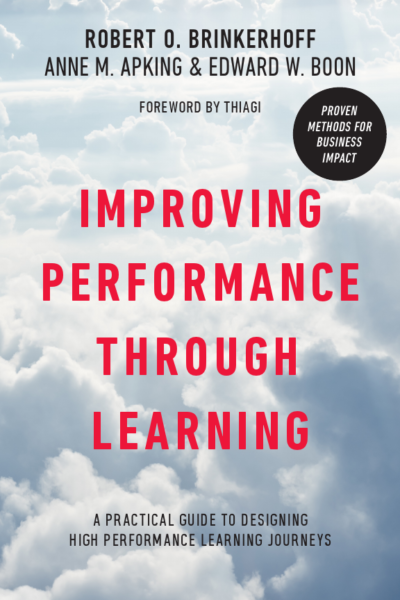In a recent conversation with a close friend, who is also an excellent example of a “lifelong learner,” we discussed her experiences with earning advanced degrees and certifications virtually. I thought, “Perfect timing! Especially now as colleges and universities are scrambling to re-design their curricula in the aftermath of the pandemic.”
Her virtual learning experiences were both exceptional and mundane, but she gained insights from both. And for me, they also reinforced the five dimensions of “stretch” that Rob, Edward, and I describe in our recent publication, Improving Performance Through Learning.
The Cohort is Key!
Even though students are not physically in the classroom, they are still a cohort, experiencing the same learning journey during the same stretch of time. Instructors and professors must take advantage of the powerful dimension of “relationships” and build strong connections among the cohort.
- Launch the course with one or more synchronous events to allow for rich, deep introductions so that students get to know one another and begin building lasting relationships.
- When meeting synchronously, require the use of cameras to create a more personal and engaging learning environment.
- Create tasks and assignments for pairs, trios, or small teams of students to work on together. Better yet, make these assignments significant and stretch them over the dimension of time to require ongoing collaboration.
- Encourage continuous curiosity and discussion across the cohort.
Break Out of the ISD Monotony
All too often, the repetitive learning approach for a higher education classroom of “lecture/take notes/write a paper/take an exam” is translated into an equally repetitive virtual instructional design: “Read this/write a paper/take an exam.” Instead, think about stretching on the dimensions of both “spaces” and “tools and structure” to spice up the design a bit.
- Consider new ways to deliver content beyond simply serving it up to students. Instead, have students search for it or create it on their own.
- Consider new ways for students to demonstrate learning outside of writing papers or taking quizzes and tests. Here are a few ideas:
- Create a video, a job aid, an infographic, or some other more interesting and creative output…maybe even creating a new learning asset for future cohorts.
- Have students teach one another. There is no better way to really learn a topic than to have to teach it to someone else.
- Create engaging case studies or performance simulations to allow real-world application of their newly acquired knowledge and skills.
Leverage Other Sources of Feedback
This may seem revolutionary but consider structuring feedback to students on assignments from sources other than the course instructor or professor. Who else could provide relevant and detailed feedback? How about subject-matter experts, past students, or even members of the cohort? If students are also employed, perhaps they can engage their manager, supervisor, coach, mentor, or co-worker to support their learning and offer feedback on tasks and assignments. All it takes is a well-designed feedback rubric and maybe a quick coaching session so that feedback providers know “what good looks like.”
This fruitful conversation with my friend was rich with reminders that stretching our learning into a true high performance learning journey applies to all learning, whether the learning is aimed at corporations and their employees, or at college and university students. The added challenge of delivering learning virtually just bumps the bar up a bit higher.
Want to learn more about how to “stretch” learning journeys for greater engagement and impact? Want to deliver engaging courses virtually? Order Improving Performance Through Learning by Robert Brinkerhoff, Anne Apking and Edward Boon at Amazon here.
